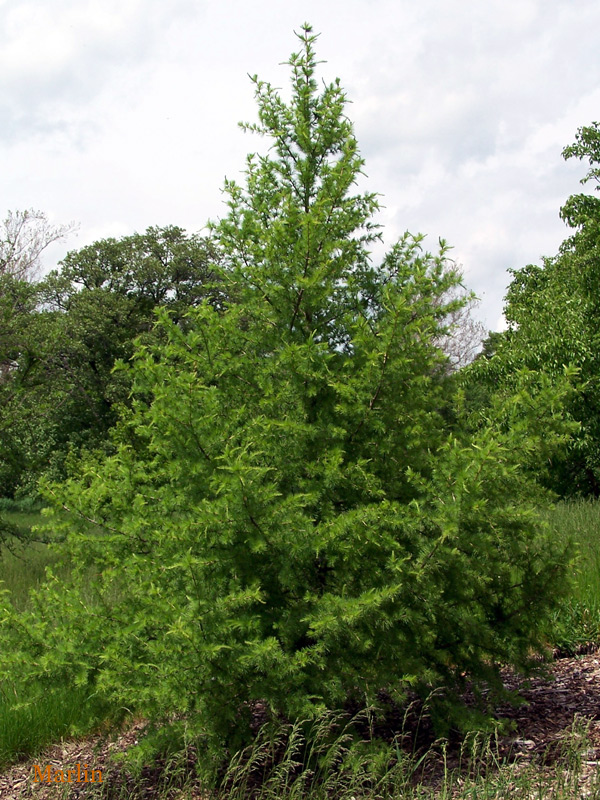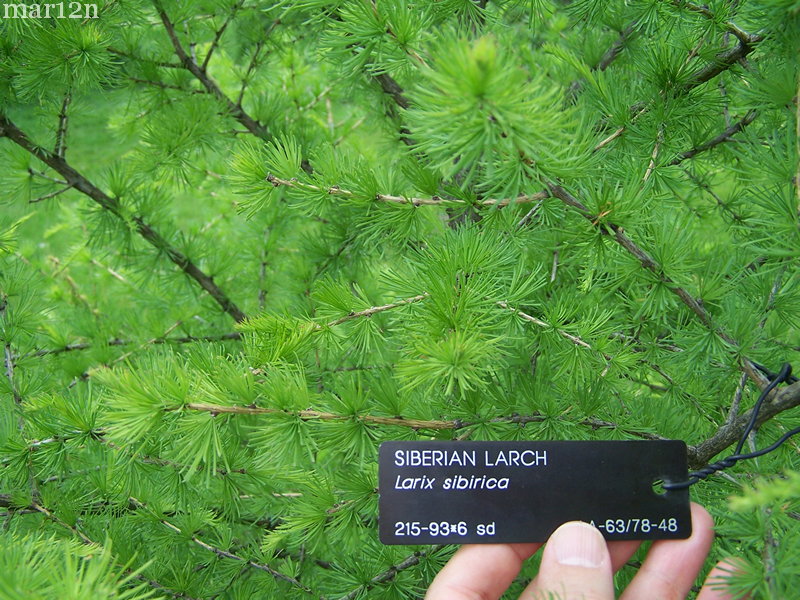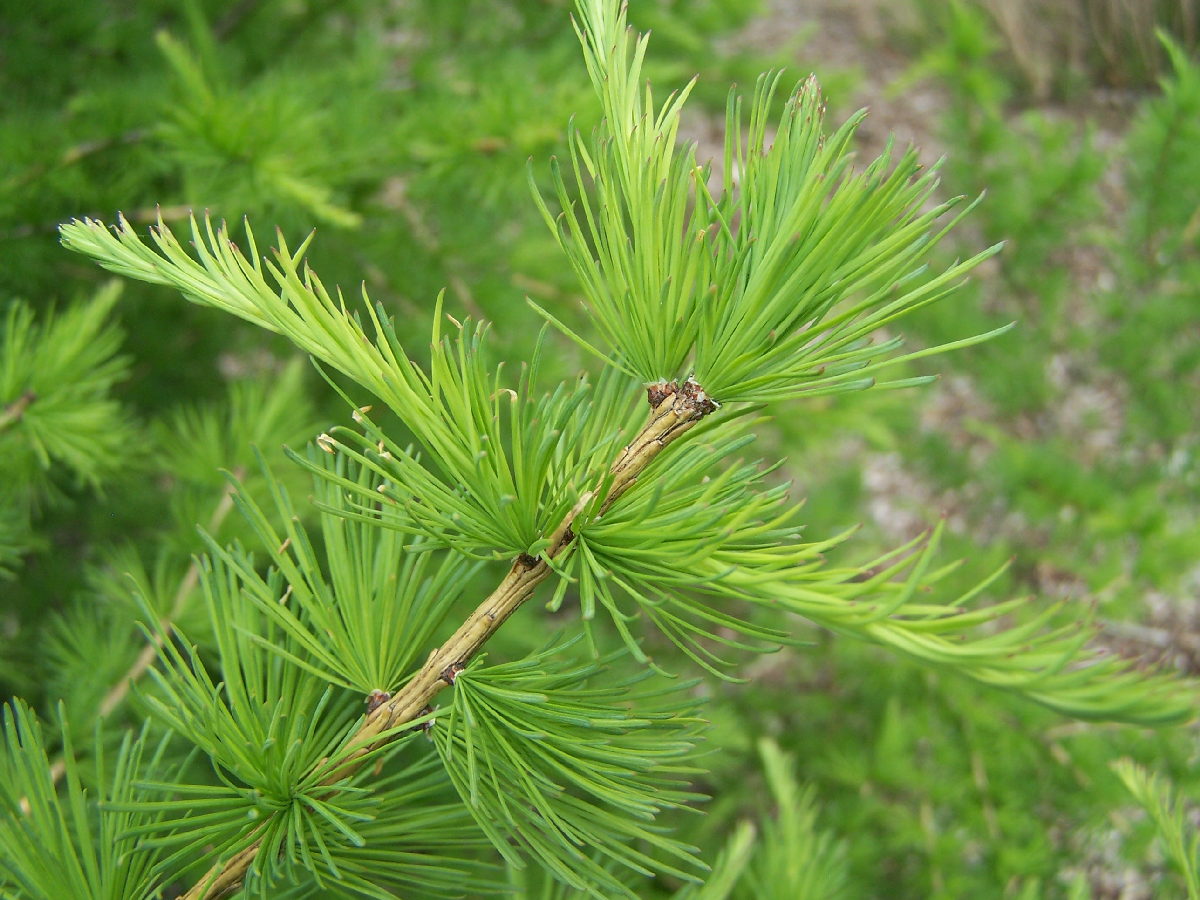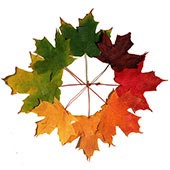Siberian Larch – Larix sibirica
Family Pinaceae: Pine, Cedar, Spruce, Fir
Native to Siberia from the Urals east to far eastern Irkutsk, Siberian larch is a deciduous, coniferous tree growing to 90 ft. with a trunk diameter of 45 inches. Also commonly called Russian larch.

Because of its rot resistance, larch wood is especially valuable for posts, poles, railroad ties, and mine timbers.
It is also used in many velodrome tracks, including the Manchester Velodrome and the Velodrome Krylatskoye in Moscow.
 Leaves 2.5-5 cm in length, slender, sharp-pointed
Leaves 2.5-5 cm in length, slender, sharp-pointed
The crown is conic when young, becoming broad with age; the main branches are level to upswept, with the side branches often pendulous.
Siberian Larch – Larix sibirica, Morton Arboretum accession 215-93*6 photos by Bruce Marlin
Family Pinaceae: Pine, Cedar, Spruce, Fir
Trees Index | Trees Main

